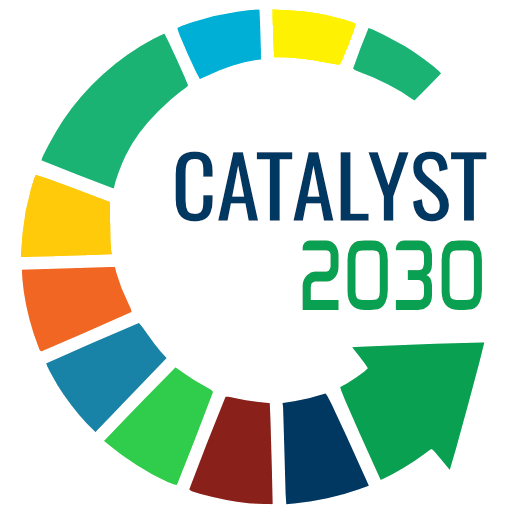
In a dispersed society, where information is abundant but subject to interests and where disinformation reigns, in times of no time, it is often difficult to measure, to show the difference your business makes in the world, or at least in your world. And when you take the line from the samba “someone warned me to tread this ground slowly” seriously, making a difference has another dimension!
And to know if you’re not out of tune or dancing off-key in this samba, you need to understand the tone, and the tempo, define the instruments that will play in the song, and the musicians who can play, test, adjust, repeat, correct, perfect… Until the day of the premiere arrives and the performance season begins.
An important point: rehearsals don’t stop after the premiere!
Do you think that music and impact measurement are not comparable? Then let’s follow this thought together:
What we’re going to talk about
Objectively, let’s start by clarifying what is meant by “Impact” here: in short, it refers to the transformations that take place as a result of an action. Raízes’ expertise is the socio-environmental changes produced by a program or project. And here we are being challenged to review our footsteps, we are immersed in a more complete systematization of results, and we want to better translate our presence in the world!
If we think that organizations and social businesses exist, by nature, to generate positive impact, it is natural to want to understand whether this objective is being achieved and to what degree. Another significant aspect concerns fundraising, as it is directly dependent on this information. Remember that clients, donors, and investors want to ensure that they are investing in solutions that generate benefits. It is exactly how to look at the complexity of measuring and publicizing this impact that we intend to talk about briefly here.
Why it matters
In many cases, measurement is already a requirement of partners, clients, and funders, or even a long-standing internal issue that is generally unorganized and systematized. But today, it has become imperative in the world of partnerships to be able to show synthetically and understandably the difference that each project or organization brings to the broader context of desired transformations.
Measuring this difference in some way is related to the objectives and mission that drive the work of each organization and can assess reach, growth, and qualitative evolution, among other dimensions of analysis. This analysis can support strategic decisions, accountability, transparency, dissemination, and engagement, among others. Understanding where you want to go is fundamental to structuring the whole process.
Doing our part
So as not to miss the beat of the samba and step slowly, it’s nature that sets the pace here, and those who establish themselves in harmony with it! Remembering that nature presents us with its patterns, flows, and cycles, but that it is also dynamic and responsive to the immense interventions we have made in it. In the illusion of not being part of it and in distancing ourselves, resting on the shoulders of the illusion of control and domination, we have exhausted what sustains us. We urgently need to try to recover this compass and write the score to align the instruments in a new harmony.
Technically speaking, this score is made up of bars called metrics and their musical notes, the indicators. And when it comes to making a good arrangement, the question arises: “Which indicators to use?”. There is no single answer to this, and it requires effort and commitment. To begin with, you can turn the specific objectives into questions that will provide relevant data as answers to the problem you have chosen to tackle. This data should answer whether the work is having the impact that was proposed, and to what extent. It sounds simple, but it requires effort, commitment, and dedication.
Qualitative information is fundamental and, in general, social businesses are excellent storytellers, but the conversation with investors, clients and donors requires synthesis and objectivity. It is increasingly imperative to quantify and, more importantly, compare their impact across a broader spectrum. This capacity will increasingly define businesses and partnerships in the near future.
As well as providing indicators that show what has happened throughout the process, it is essential to define those that indicate the legacy of the project or initiative, such as structural or mentality changes in the medium and long term. For each sphere, still comparing it to a samba, the beats, rhythm, verses and stanzas are defined. And it’s important to know that the chorus is always the part that will echo in people’s heads.
Precision is essential for samba’s harmony, and for it to have a swinging balance, it requires strategically thought-out indicators! These indicators must take into account the specificities of each initiative, organization, or project and show how much they contribute to the wider sphere, how much local action contributes to global thinking.
This is where references are needed so that, within a broader panorama, each initiative understands what it can and cannot absorb. Sector groups, trade associations, collectives, certification bodies, and academia are all partners who can inspire and be willing to compose and learn this score together!
Whatever the scale, there are six elementary moments to take on this journey:
Each stage requires studies, conversations, a lot of listening, reflection, and choices. It is important to always bear in mind and revisit the organization’s value proposition and purpose, values and principles, working methods, and ways of relating and communicating. Purposeful actions and initiatives these days cannot be sustained by uninformed management, based solely on the perceptions and opinions of its technicians and stakeholders. Data has become indispensable for evidence-based decision-making and is a fundamental part of every organization’s decision-making process based on one significant action: knowing and measuring its impact.
Seeing ourselves as part of a larger wave
Every manager’s challenge is to look around and understand that they are part of a system that is constantly effervescing; and that they need to be able to attest to their positive impact by employing comparable, verifiable, and reliable metrics. In general, they intend to gather and analyze consistent data that generates reputation, business alliances, and global collaboration. From the Sustainable Development Goals (SDGs) that the organization observes or meets, to its business objectives, everything needs to be aligned and favors dialogue and business opportunities with impact investors and ESG investors.
When it comes to ESG ( Environmental, Social, and Governance), the word is Materiality. This term, which comes from accounting, has come to be used mainly in Social Responsibility and Sustainability to define how to collect the information necessary for all stakeholders, as well as investors, to understand an organization’s performance on ESG issues. To apply the concept, it is necessary to identify the high-priority issues for both stakeholders and the company. In other words, the performance of the business or initiative will always consider the potential of each issue to positively or negatively impact organizational growth and also the importance of each issue for stakeholders.
But looking at ESG is just one of the possibilities for constructing your score. There are also certification systems, public policies for promotion, and even demands from financiers and clients that can be luxurious aids in your composition! The market sector in which you operate may have already debated sectoral metrics or may be interested in debating them and have begun to create collective spaces for debate. There is no room for dissent here!
Even though it’s a complex subject, a recent survey conducted by AmCham Brazil (Panorama 2024) reveals two predominant trends on the business scene for next year: Artificial Intelligence (AI), mentioned by 60% of those interviewed, and the ESG Agenda (Environmental, Social, and Governance), cited by 51%. In addition, two other topics linked to environmental issues and sustainability are on the list: renewable energies and the circular economy. It’s not just a trend, it’s a matter of urgency.
It’s not a task, it’s a journey…
Let’s remember that this is about organizations and social businesses that see themselves as generating a positive impact and therefore want to understand whether this objective is being achieved and to what degree. It is natural to deduce that measurement and monitoring are not exhaustive in themselves and should be part of the whole life of the institution.
Measuring its impact goes far beyond measurement; because analyzing the causal relationship between interventions and perceived impacts, identifying factors that promote transformations and those that don’t, and limiting factors and factors that create obstacles, means being able to draw up strategies to increase the desired transformations. This measurement also helps organizations maintain a transparent relationship with clients, funders, and donors and can act to induce public policies.
And since thinkers always repeat that “it’s the journey that counts” and not the final destination, may everyone be able to appreciate and learn from the lessons learned to make the wisest choices in life’s next forks!
To learn more (in Portuguese):
How to measure impact | AGO SOCIAL
What are ESG indicators and what are their impacts on companies?
ESG IMPACT: tips for measuring social and environmental impacts in your company or NGO | Cause
ESG in practice: from theory to real measurement | Exame
How to do social impact assessment | Instituto Legado
Challenges and opportunities in measuring social impact | Management Solutions


